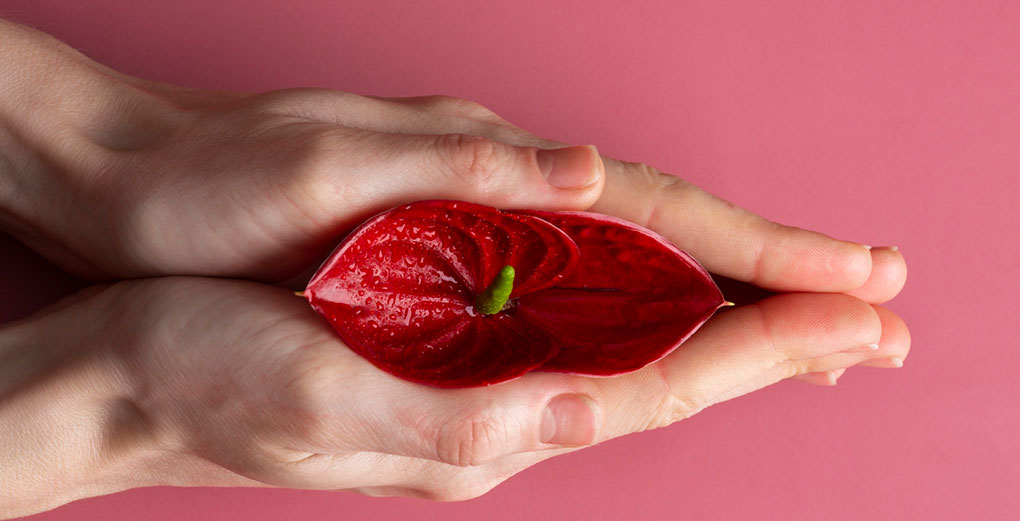Most people think of their sexual anatomy (which we might define as those parts of our body we use for sex e.g. vagina / penis) and their reproductive anatomy (those parts of our body we use for reproduction) as being one in the same. This makes sense since that’s how most healthcare providers think about it too. But when you think about it, it’s a bit strange that we do this.
For starters, the vast majority of the sex we have is not for reproduction.
In fact if we only had sex to reproduce, well, we wouldn’t be having very much sex. And related to this, sex is much more than intercourse. Any list of sexual activities includes dozens (maybe hundreds?) of things that could never result in conception, even if they were being done by two people who were capable of making a baby.
This exercise is designed to help you learn more about your own sexual body and takes a different approach to sexual anatomy. Instead of narrowing in on just a few body parts, the goal is to map out all the parts of your body that can feel good and may be part of your sex play. The end result will be a sexual body map that you can use on yourself or share with a partner.
Exploring Safely
As with any sexual exploration, mapping out your sexual body can bring up painful and difficult feelings and memories. It’s always best to have someone (a friend, partner, therapist) you can turn to for support if unexpected thoughts and feelings arise. If you don’t feel like you have any support in place and you are concerned about what might come up, it could be better to get that support before starting to explore.
Having some quiet time and a safe space are important aspects of safe exploration. You don’t need a full day and a room with a lock on the door, but think about how you can maximize your privacy and minimize distractions before you start to explore.
Take A Focused Breath Tour Of Your Sexual Body
Before jumping right to a “touch” tour of your own body, start by taking a tour of your body just using your mind via breath and awareness. For this step, you need to learn the basics of conscious breathing.
Once you’re comfortable with conscious breathing, begin by focusing your awareness on one part of your body. Start either at the top of your head or at your toes and move slowly up or down from one part to another. As you hold your awareness on one body part, pay attention to what happens:
- Do certain thoughts about that body part come to mind when you focus your awareness on it?
- Do you remember things people have said about that part of your body?
- How does that part of your body feel different when you focus on it?
- When you imagine that body part, without touching it, how does it look in your mind? What is its shape, size, color? How do you imagine it feels?
- Let your mind wander and see what sorts of fantasies you might have about this part of your body and what role it might have in sex play.
Try to focus on specific body parts. Don’t just imagine your whole leg; instead imagine your toes and the balls of your feet, imagine the back of your knee and the tops of your thighs.
You may skip over parts of your body. Pay close attention to this, and if it feels safe to do so, go back to those parts you skipped over. Why do you think you passed them by initially? Don’t ignore the parts of your body you’ve been told are ugly or dirty, or that you think have nothing to do with sex. Give every body part the chance to reveal something unexpected.
Continue with this exercise until you’ve gone through your whole body. Once you’re done, you may feel like writing some of your experiences down. You might want to draw your body and make visual notes for yourself. This isn’t information you have to share with others, but it can be helpful to keep a record for yourself. If you’re not sure you can keep something like this safe from prying eyes of others, it might be better just to make mental notes.
Take A Touch Tour Of Your Sexual Body
If you’re able to touch yourself or have a partner you can do the exercises with, the next step is to repeat the above breath tour, but this time add touch. Start with the breathing and then focus on a particular body part, and then touch that part of your body. The touch shouldn’t be intended to turn you on or stimulate you to orgasm. The touch is just another way of learning. Pay attention to the questions listed above, but as you touch this part of your body experiment with the following:
- Experiment with different kinds of touch – soft, firm, slow, quick. How does this part of your body respond to the different kinds of touch?
- Does touching this body part feel good, or bad, or nothing? See if you can sense the difference between feeling awkward and feeling unsafe.
- Just from your own touch, how would you describe that body part? What words would you use to describe its shape and size?
- Compared to other parts of your body does this part have a lot of sensation? Less sensation?
- Notice how body parts that get used a lot during the day (such as shoulders, hands, feet, the back of the head) may feel different than parts that are not touched often (the back of the neck, inner thighs, etc…). Do the “hidden” parts feel different than the visible parts?
Try this exercise going slowly from one side of your body to the other or from the top to the bottom. Again, pay attention to which body parts your hands seem to skip over. If it feels okay, go back to those and pay extra attention to how they feel and what about them you might be avoiding.
At the end of this exercise, the goal is to know a bit more about your body – which parts feel good and which ones feel bad, which parts need gentle touching and which parts require a firmer hand, which parts you want to share and which you don’t.
One last thing to remember: It is natural and expected that our sexual bodies and sexual anatomy will change as we get more experience and get older. The goal is not for you to figure it all out and then have the final answer to every sexual question put to you. This mapping out your sexual body is something you can do over your lifetime, and (hopefully) you’ll find some things have stayed the same, and others have changed.












